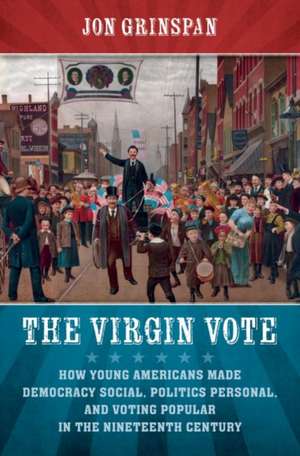The Virgin Vote
Autor Jon Grinspanen Limba Engleză Paperback – aug 2019
Drawing on hundreds of diaries and letters of diverse young Americans--from barmaids to belles, sharecroppers to cowboys--this book explores how exuberant young people and scheming party bosses relied on each other from the 1840s to the turn of the twentieth century. It also explains why this era ended so dramatically and asks if aspects of that strange period might be useful today.
In a vivid evocation of this formative but forgotten world, Jon Grinspan recalls a time when struggling young citizens found identity and maturity in democracy.
Preț: 216.43 lei
Nou
Puncte Express: 325
Preț estimativ în valută:
41.42€ • 42.98$ • 34.62£
41.42€ • 42.98$ • 34.62£
Carte tipărită la comandă
Livrare economică 15-29 martie
Preluare comenzi: 021 569.72.76
Specificații
ISBN-13: 9781469654744
ISBN-10: 1469654741
Pagini: 266
Dimensiuni: 156 x 234 x 16 mm
Greutate: 0.41 kg
Editura: The University of North Carolina Press
ISBN-10: 1469654741
Pagini: 266
Dimensiuni: 156 x 234 x 16 mm
Greutate: 0.41 kg
Editura: The University of North Carolina Press
Notă biografică
Jon Grinspan is a historian of American democracy, youth, and popular culture. He is a curator of political history at the Smithsonian's National Museum of American History and a frequent contributor to the New York Times.
Descriere
Drawing on hundreds of diaries and letters of diverse young Americans, this book explores how exuberant young people and scheming party bosses relied on each other from the 1840s to the turn of the twentieth century. It also explains why this era ended so dramatically and asks if aspects of that strange period might be useful today.
